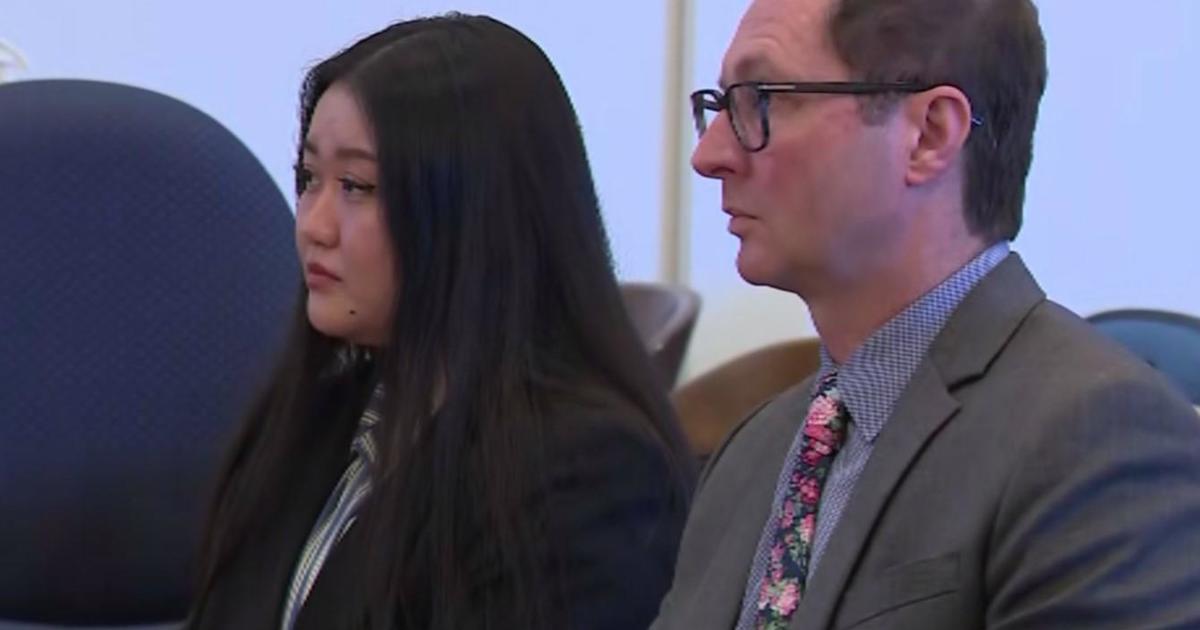Some Women Go To Great Lengths For Relief From Debilitating Monthly Cramps
LOS ANGELES (CBSLA.com) — For many women, mood swings and pain are a monthly ordeal, but in some cases, the cramping may be so severe women are taking drastic measures to find relief from the pain.
One such woman, who experienced cramps she described as mind-numbingly painful, was Leslie Valladares of Torrance, who searched to end years of suffering.
"I started having what I would assume were contractions," Valladares recalls.
Valladares told CBS2's Lisa Sigell she will be traveling 400 miles to Los Gatos to see the only doctor who's been able to help her.
Valladares is a pediatric registered nurse but has been unable to find help closer to home.
For years, she says "Everybody's basically telling me I'm not supposed to be in pain but I am."
Valladares' symptoms started at the age of 12. Every month, along with bleeding, she would experience excruciating pain.
Valladares says she saw one gynecologist after another about her painful periods and they would tell her, "Yes, mine is like that," "Yup, it's very painful," or "We just have to all go through it."
She says the message was clear: "Suck it up. Deal with it. We all do it. You can do it, too."
"And I just thought something was wrong with me. Why can't I handle this pain that everybody else seems to think is normal?" she asked.
It wasn't normal and she wasn't alone.
Valladares has endometriosis, or endo, a disease that affects one in eight women.
Andrew Cook, an endometriosis specialist in Los Gatos, is one of a handful of doctors nationwide who have devoted their careers to studying and treating the disease.
Endo, he says, "is tissue that's similar to what we find inside the uterus. And it gets outside. It can grow through the bladder. It can grow in the liver. The diaphragm. And it can be horrendous."
But it's often hard to get help.
"Most physicians don't get very much time in medical school being taught about it," he explains.
Women can wind up stigmatized when they complain treatment doesn't work.
Valladares had her first endo surgery in 2005 and three months later, the pain came back. When she told her previous doctor, she says: "He told me to look into fighting this pain medication addiction that he thought I had." "It literally felt like he turned on me," she said.
Cook explained: "Endometriosis tortures people. It doesn't kill them, but there's times you may wish it would kill you. It basically robs you from a normal life."
Patients travel to Cook when all else fails.
"We deal with tough cases. On average, patients have been through three or four surgeries," he explains.
His approach?
"I'm treating it with the same techniques as we would treat a cancer," he said.
Surgeons typically burn away what they can see, and Cook says that isn't always enough.
"You need to get around the lesion and cut it all out. If it's not all removed, it'll come back, just like if you don't get all of the cancer out," he said.
Cook's meticulous surgical technique can take hours and isn't cheap. Treatment can cost up to $10,000 out of pocket, but Valladares has no regrets.
"It almost feels like I woke up from this nightmare that I had for so long," she said. "I feel like I've gotten this huge piece of my life back. I feel free."
A telltale sign of endometriosis includes severe monthly cramping that gets worse as time progresses. Endometriosis can start in adolescence and can last beyond menopause. The condition is diagnosed via laparoscopic surgery. It is usually not detectible by ultrasound or other scans.
To learn more about endometriosis, click here. For information about Cook, click here or visit Amazon.com for more about a book he has written.
To find a list of endometriosis specialists, click here. To reach a support group via Facebook, click here.
This story was produced by CBS2 Medical Producer Gerri Shaftel Constant.



